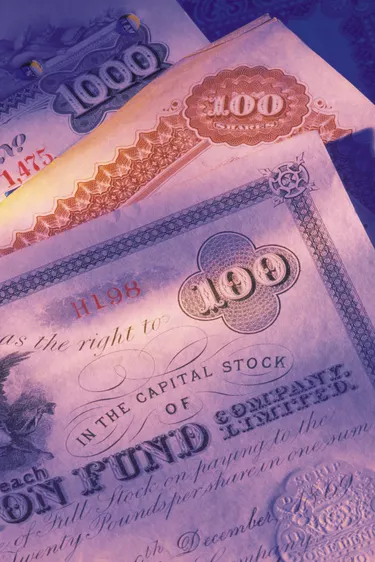
A corporation and sole proprietorship are two common types of business structures. A corporation typically has multiple owners who hold stock in the company, while a sole proprietorship has only one owner and no stock. The balance sheet for the two structures is similar except for the equity section. This section is called stockholders' equity if your small business is a corporation and owner's equity if it is a sole proprietorship.
Stockholders’ Equity Accounts
Video of the Day
A corporation's stockholders' equity section lists more accounts than a sole proprietorship's owner's equity section. Accounts listed under contributed, or paid-in, capital show the money that common and preferred stockholders have invested in the company. Retained earnings shows the profits that the company has kept since its beginning that it hasn't distributed as dividends to stockholders. If a corporation buys back shares from investors, it reports the amount as treasury stock, which reduces its equity.
Video of the Day
Total Stockholders’ Equity
Total stockholders' equity equals total contributed capital plus retained earnings minus treasury stock. This total represents the accounting value of all stockholders' stake in the company. Each stockholder's individual stake depends on the number of shares he owns and the number of shares outstanding. For example, if your small business has $50,000 in contributed capital and $150,000 in retained earnings, your total stockholders' equity is $200,000. If there are 10,000 shares outstanding and you own 8,000 shares, you own 80 percent of the total equity.
Owner’s Equity
Like a corporation's total stockholders' equity, a sole proprietorship's total owner's equity represents the owner's stake in the company. But because a sole proprietorship has no stockholders and has only one owner, he lays claim to 100 percent of the equity. The owner's equity section also contains only one account, called the capital account. The balance sheet typically shows this account as the owner's name followed by "capital." For example, if John Smith owns a sole proprietorship, the balance sheet would show "John Smith, Capital."
Capital Account Function
The single capital account in the owner's equity section captures all the money that would be reflected separately in a corporation's retained earnings and contributed capital accounts. Any money the owner invests and any profits he earns add to the capital account, while any withdrawals he makes decrease the account. For instance, if you initially invested $5,000 into your sole proprietorship and have accumulated $50,000 in profits since you started, your capital account balance and total owner's equity would be $55,000.